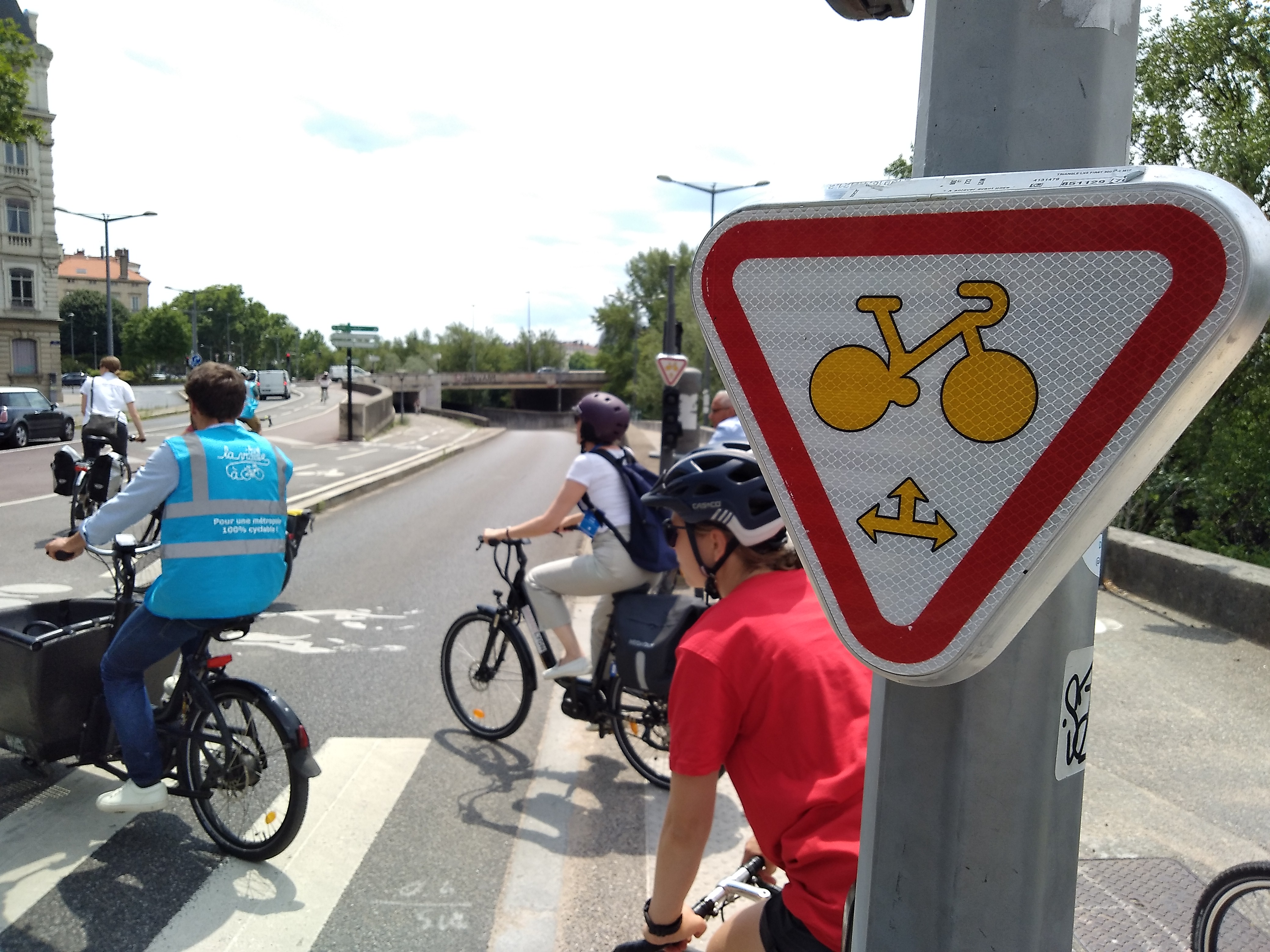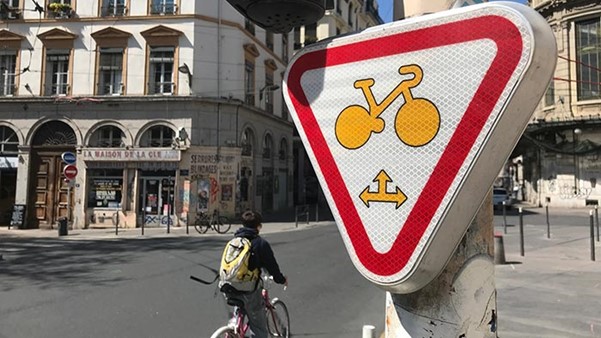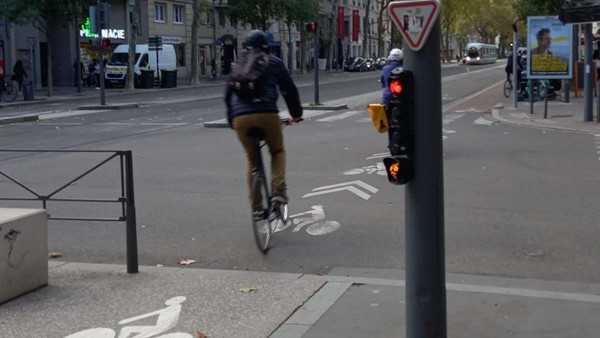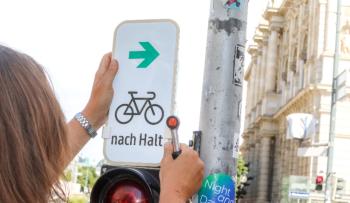
Traffic light exemption for cyclists: new study from Lyon
A new French study confirms that conditionally allowing cyclists to cross red lights improves the fluidity of cycling traffic without compromising road safety. However, there is a need to improve public awareness and understanding of traffic signs – a focus area for the UNECE expert group on cycling infrastructure in their harmonisation efforts.
Experiments in Lyon
In June 2023, CEREMA – a French public institution that provides technical expertise, research, and support for public policies in mobility, land use planning, and environment - published a study report on conditional crossing of red lights for cyclists. This study was conducted in the Lyon metropolitan area (France).
As part of Lyon’s Urban Mobility Plan to encourage more cycling, M12 panels and R19 signals were put up to allow cyclists to cross red lights under certain conditions to make it easier for cyclists to cross intersections. With a view to expand the use of these signs, this study evaluates their effectiveness and impact on safety, particularly at intersections with tram lines.
How does it work?
What is an M12 panel? ‘The M12 panel allows cyclists to cross a red light to proceed in the direction(s) indicated on the panel at the first intersection, after yielding to other road users, particularly pedestrians. It was authorised in 2012 for right turns or straight-ahead movements at T-intersections and in 2015 for other crossing directions (CEREMA).
To gain a clearer understanding, you can watch this video from CEREMA: https://www.youtube.com/watch?v=yIcj9rIWgA8

And the R19 signal? ‘The R19 signal, also designed for cyclists, is a conditional crossing authorisation signal. It is a flashing yellow light with a bicycle pictogram and an arrow indicating the permitted directions. Since 2012, this signal has allowed cyclists to cross a red light by following the indicated direction(s), provided they yield to other road users (CEREMA). R19 is mainly intended for intersections where regular traffic light phases do not accommodate cyclists. In the experiment, it was used at tramway intersections with special traffic light phases.

The analysis compared cyclist behaviour at 10 intersections with different configurations over three distinct periods: (before installation of the panels/signals, shortly after installation, and 6 months after installation). The evaluation included video analysis, on-site cyclist surveys, and road safety indicators.
What we learn from this study is that user perception/detection and understanding of the signage need significant improvement. Detection rates are relatively low at around 50%. Understanding is similarly low with only 60% for M12 and 32% for R19. According to CEREMA, there is significant room for improvement, and there is a need for better communication and training users on the understanding of these signals.
CEREMA also notes that M12 panels and R19 signals essentially reinforce existing behaviours. Especially the M12 panels simply formalise behaviour where cyclists were crossing red lights. The R19 signal appears to have a positive impact on cyclist behaviour, particularly during parallel phases to tramway traffic or in transition phases, without any increase in unauthorised crossings. CEREMA therefore recommends further promoting the use of this signal to improve the flow of cycling traffic.
Regarding safety, no significant change was observed after the installation of the panels. However, it is noted that with a potential increase in the modal share of active modes, it is necessary to remain vigilant and adjust the signage according to future traffic flows and layouts.
Finally, CEREMA did not observe an increase in accidents following the installation of the signage. However, it cautions that this observation could change with an increase in the modal share of cycling. "It therefore seems desirable to maintain monitoring to adjust the signage according to future traffic flows and layouts."
Lessons from other cities
In Austria, the City of Vienna now allows cyclists to turn right at red lights at over 300 locations. Positive outcomes with the introduction of a similar solution in Germany were shared at the last International Cycling Safety Conference. Belgium, which has been allowing cyclists to turn right at red lights or go straight on T-junctions for a long time, recently expanded its set of panels to provide other exemptions for cyclists, following the French example. The United Nations Economic Commission for Europe Group of experts on cycle infrastructure has proposed that a panel indicating traffic light exemption for cyclists should be included in the international Convention on Road Signs and Signals. This would help to harmonise the signage used in different countries and improve the recognisability of such solutions.
Contact the author
Recent news!
Upcoming events
Contact Us
Avenue des Arts, 7-8
Postal address: Rue de la Charité, 22
1210 Brussels, Belgium









